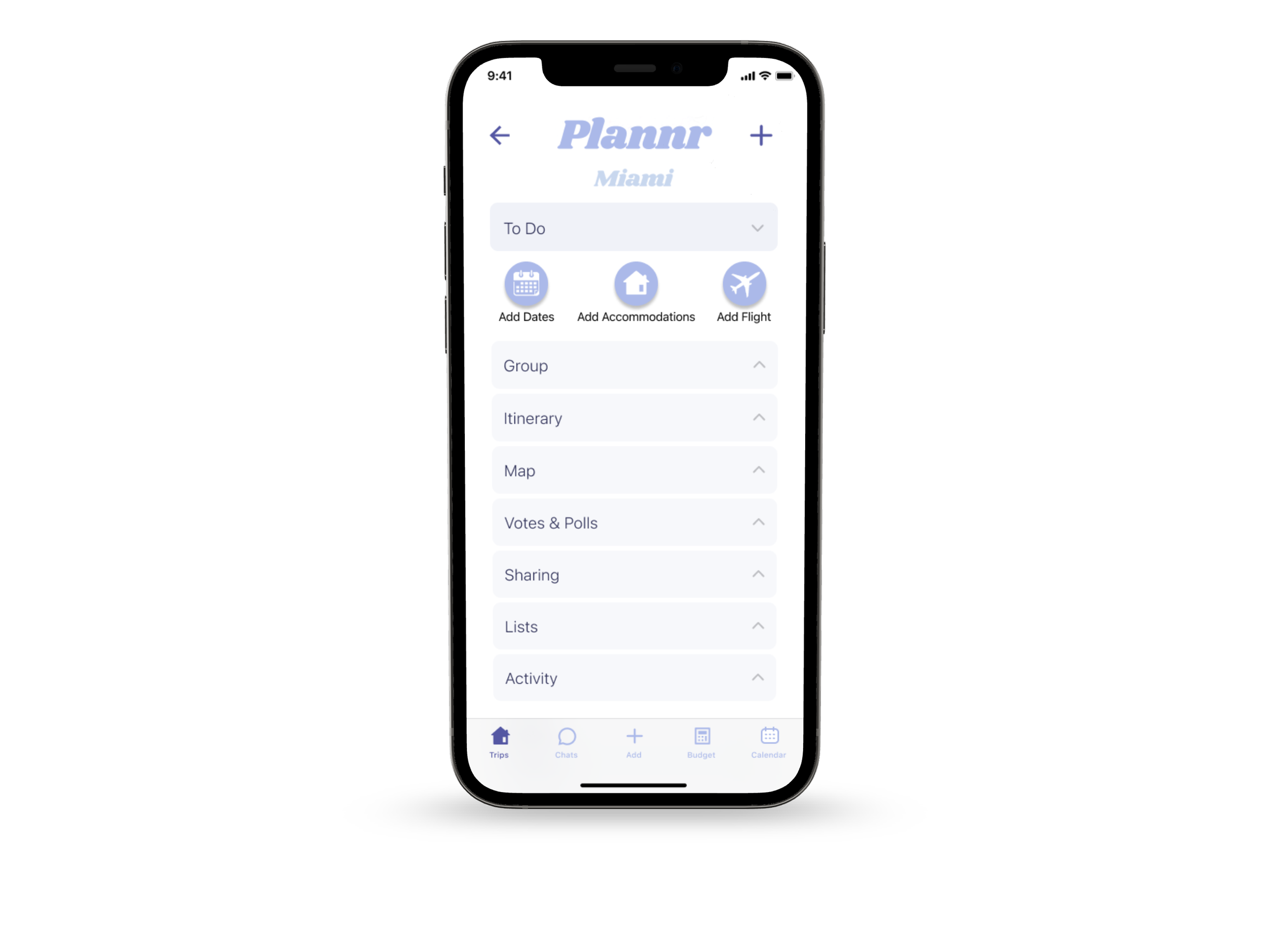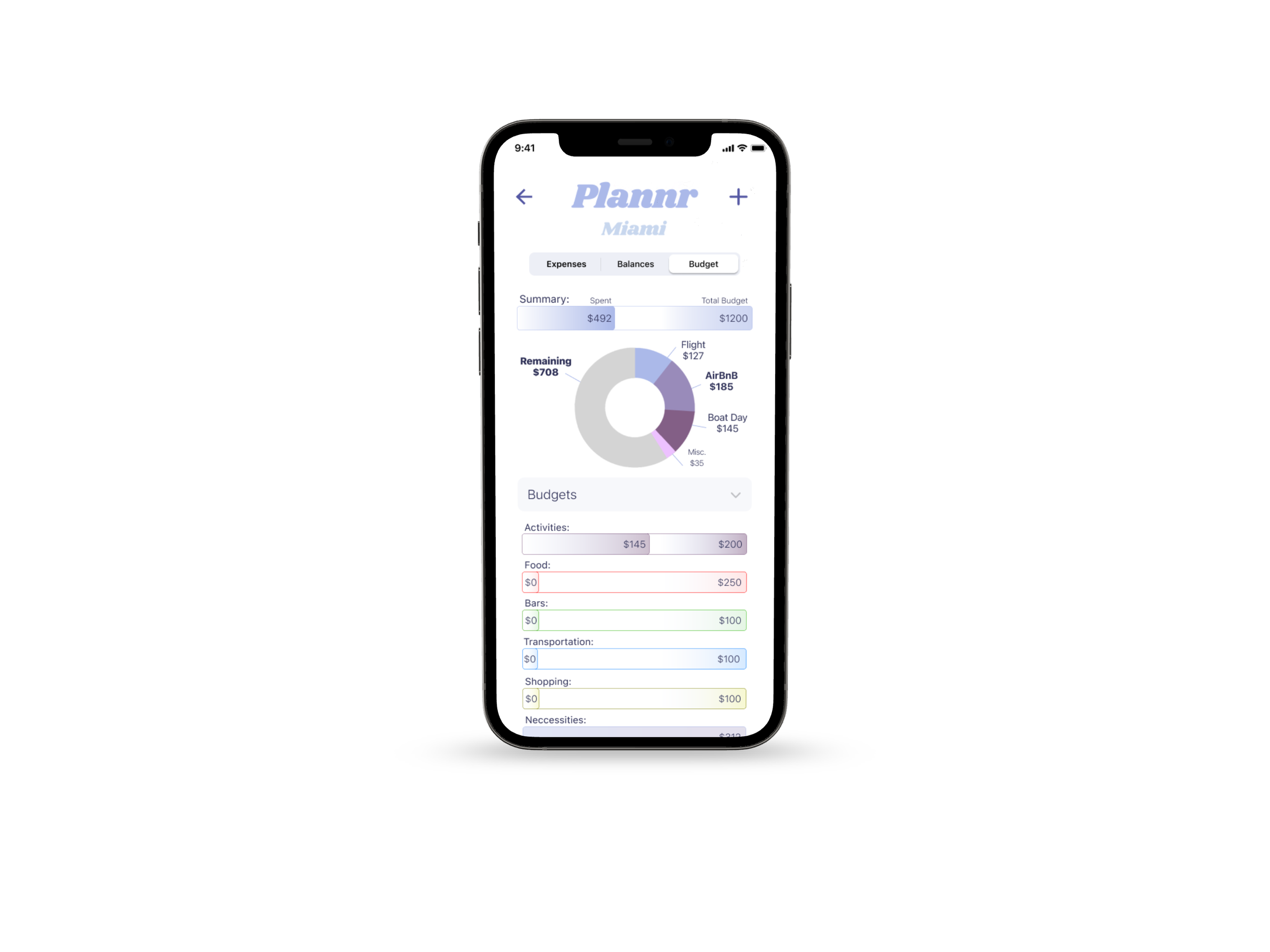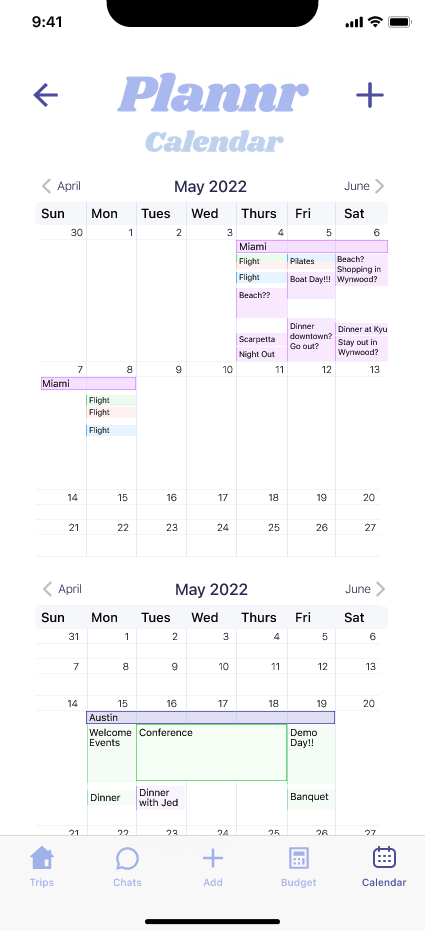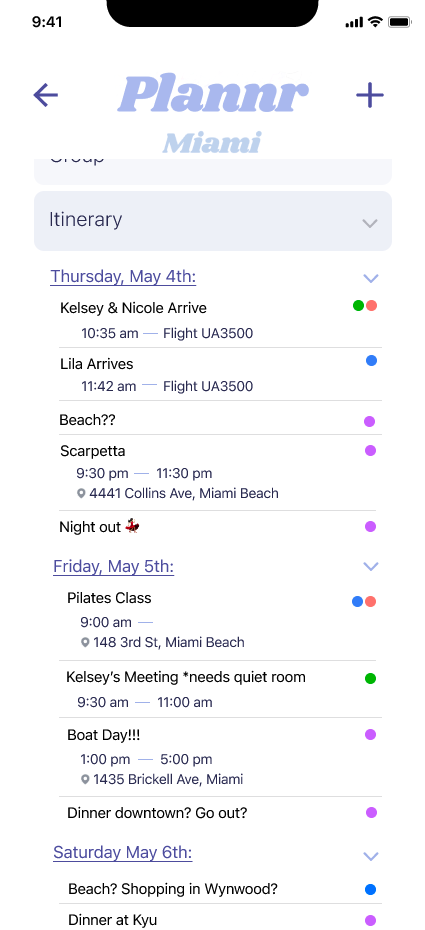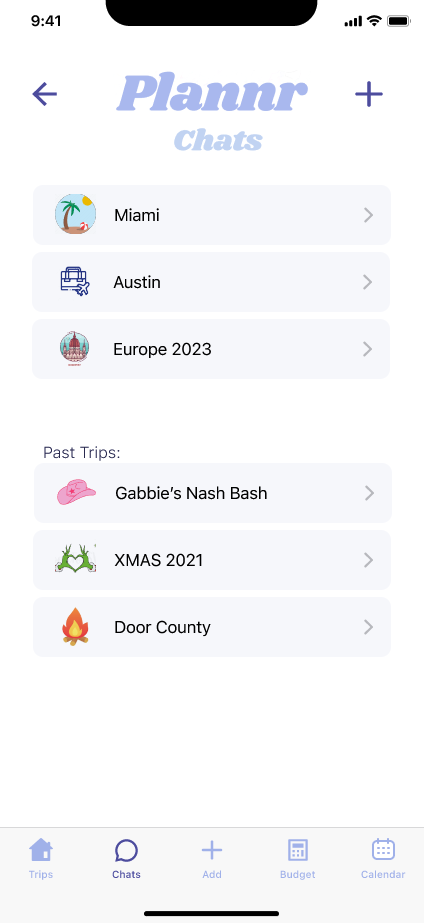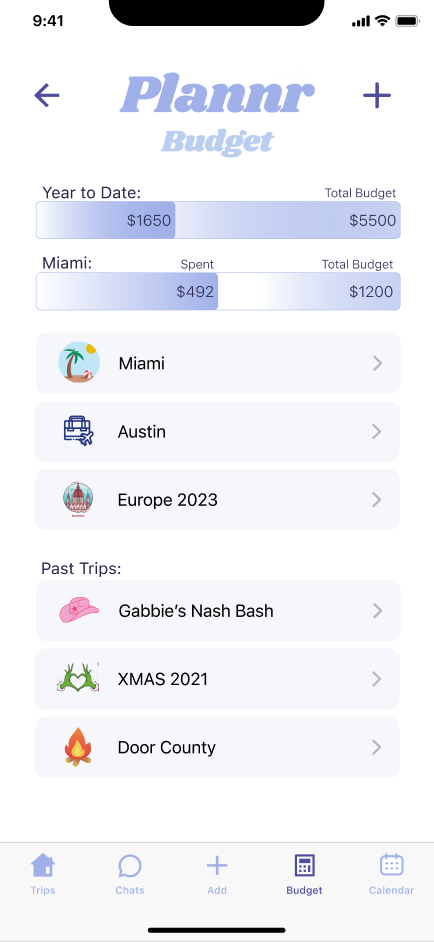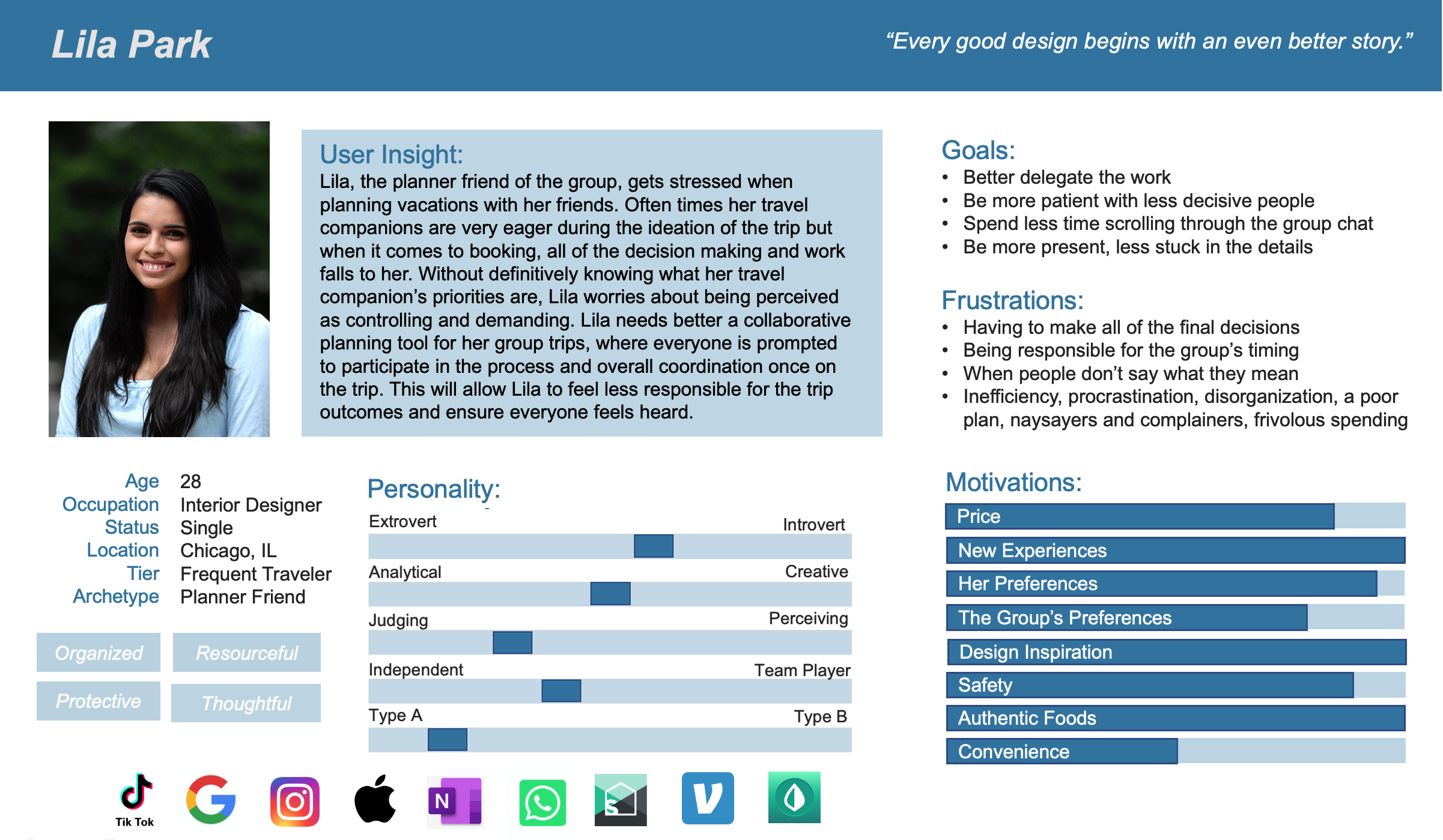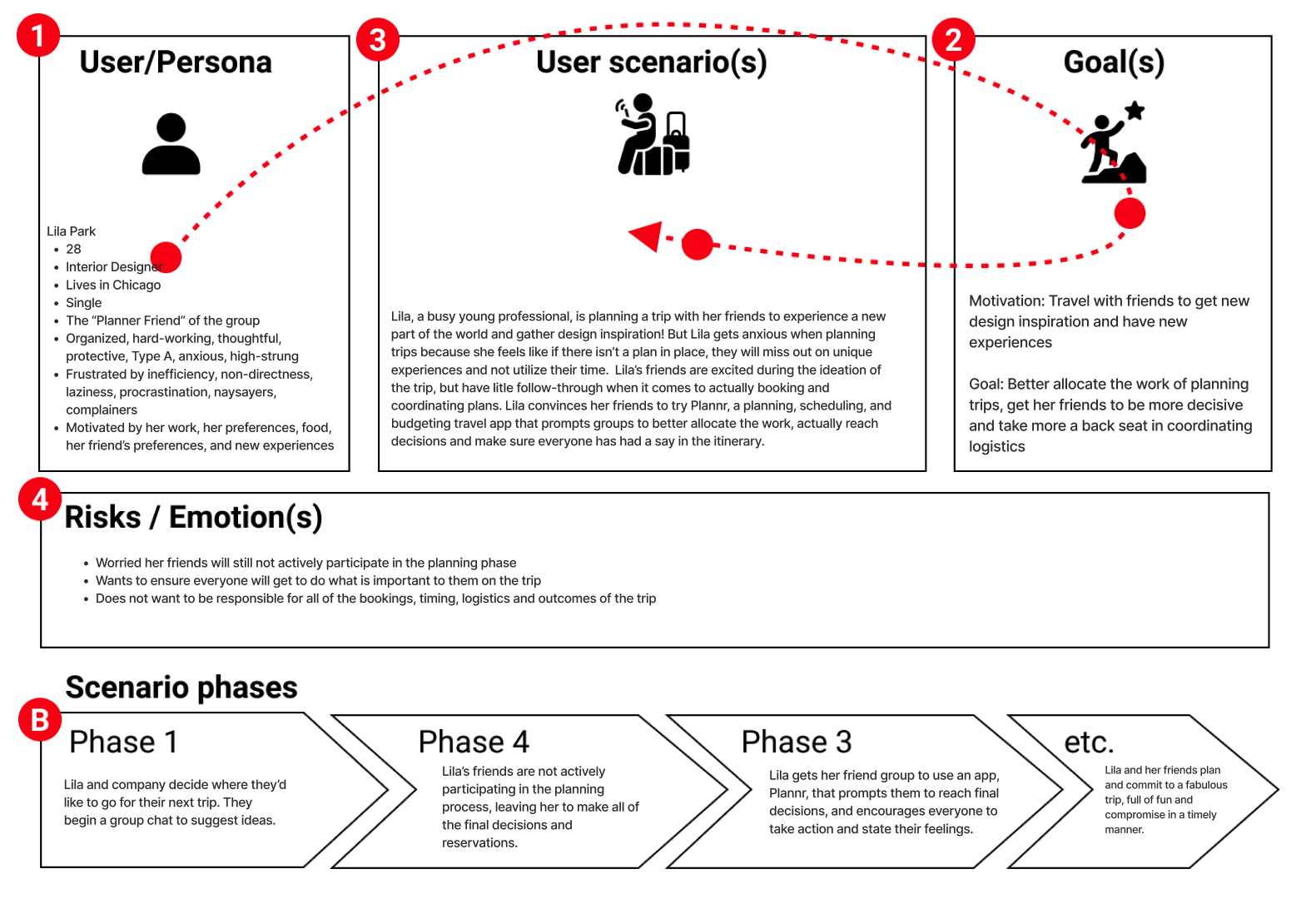Group Travel Made Easy
Centralize travel information. Solve communication and coordination issues. Impartially reach decisions. Plan an itinerary. Track spending. Better delegate the work.
Budgeting Tool
Calendar & Itinerary
Group Chat
Traveling in a group with varied budgets and spending habits can be tricky. With Plannr you can:
Track spending, split payments, and simplify debts
Design and share your budget with your travel companions
Increase awareness of spending
The same group chat features you know and love, but fully integrated.
Message reactions, direct reply, etc.
Voting, polling and word cloud generation
Can generate “To-Do” list items and set reminders
Two ways to visibly see how the plans align, keep the information readily accessible and improve timing.
Itinerary - a quick snapshot of each day
Calendar - in depth look at everyone’s schedule
Foster inclusion and collaboration
To-Do Lists
Stay on top of your to-do list, send reminders when action needs to be taken and keep the planning moving.
Map
Map out your accommodations, reservations, even tentative plans. Utilize the location services to stay on time and easily find your travel companions’ live location.
Group Information
Readily accessible contact information, color-coded for ease.
Votes & Polls
Anonymously gather feedback on proposed ideas. Give an equal opportunity to everyone to voice their opinions.
Lists
A tool for creating collaborative checklists and gathering notes.
Sharing
One place for everyone to share photos, videos, playlists and more.
One Place to Keep All of the Essentials
CHALLENGE
Design an app that solves an issue relating to travel.
PROBLEM
From initial interviews two things became clear:
People mostly travel in groups
Planning that travel is always a mess
SOLUTION
People struggle to coordinate and plan group trips, often times information gets lost and decisions don’t get made.
Plannr is an App that helps groups traveling together plan their itinerary, budget, centralize their travel information and and solve communication issues impartially and efficiently.
SCOPE
4 Weeks: From ideation to a fully functional high-fidelity prototype
My Role: Creator, Researcher, Designer - Independent Project
Tools Used: Figma, Adobe XD, InDesign, Photoshop
RESEARCH
THE
USER
⋅
RESEARCH THE USER ⋅
I began my research by crafting research objectives:
What integrations would be advantageous?
What information needs to be prioritized?
What types of plans do people want to organize before the trip?
What types of users are we going to have?
What accessibility features need to be considered?
And ultimately, how can we improve the overall experience of traveling in a group, from ideation to execution and after?
THE RESULTS
Six user interviews and a survey with 73 participants was conducted.
Key moments were then grouped to discern people’s most common travel habits, concerns and frustrations.
During insight synthesis, a pattern emerged.
Most travelers fall into one of three archetypes, each with their own specific concerns:
DEFINE
THE
PROBLEM
⋅
DEFINE THE PROBLEM ⋅
But no matter the archetype, everyone expressed some similar wants, hopes and needs.
To synthesize these findings into one user persona, representing multiple users, I first explored what our users say, do, think and feel in an empathy map.
We believe that users need an efficient means of coordinating group travel, to better utilize their time on vacation and ensure everyone has had a say. We observed that without an alternative, people rely on group chats where decisions don’t get made and the actual planning work falls to just a few.
Further iterating on those insights ultimately gave way to the Problem Statement:
To better define what problems we’re ultimately trying to solve, I then focused on our User Persona specifically. Although the needs of the other two archetypes are important, I chose to focus on the planner type in my insights because they’re ultimately the ones doing the most work.
To kickstart ideation, I did a deep dive into the competitors already available to users on the market: direct and indirect.
IDEATE
SOLUTIONS
⋅
IDEATE SOLUTIONS ⋅
To prioritize features, I looked into users’ needs: past, present and future.
The idea clusters that formed from the “I Like.., I Wish.., What If…” ideation exercise ultimately defined the remaining research objectives to be answered: what integrations and accessibility features do people want?
To balance the importance of each solution with its viability within the project’s scope, I then utilized a feature prioritization matrix.
Although a lot of these tools are already available to people, they’ve not yet been integrated into one platform, friendly to both iOS and android users.
I then used storytelling methods to explore how these solutions could solve those mutual issues expressed by users during research and illustrate what benefits and pitfalls may present.
Throughout these exercises I really wanted to focus on demonstrating how issues will still arise, Plannr isn’t the end all be all, but it can help!
One such example I demonstrated is how if you’ve overbooked your trip and timelines are too tight, the itinerary and calendar will visibly alert you to this and you can quickly send out a poll to settle it.
With still too many features prioritized for my scope, I utilized the Value Proposition Canvas Method to really dive into: “What does my app do better than others?”
I wanted to broaden my solutions to consider all three archetypes. It was important to me to explore how each benefit, pitfall, job, pain reliever, and gain affected each archetype uniquely.
The orange post-its represent the planner archetype, the blue the procrastinator and the purple the middle man and the overall group.
Through these ideation exercises and the analysis and many iterations that followed, I defined the Value Proposition Statement:
My organization, Plannr, is developing an app to help groups traveling together solve coordination and communication issues impartially and efficiently.
We’re better because we’ve integrated all of the tools travelers might need into one simple but customizable platform, full of assistive features, prompts and reminders to keep groups on time, satisfied and balanced.
We’re believable because this idea was born of a group of friends on vacation together. Our varied personality traits and travel habits, good and bad, spurred research into types of users and their specific feelings, frustrations, wants and needs for traveling in a group setting.
We didn’t create what people theoretically need, we created what WE need.


